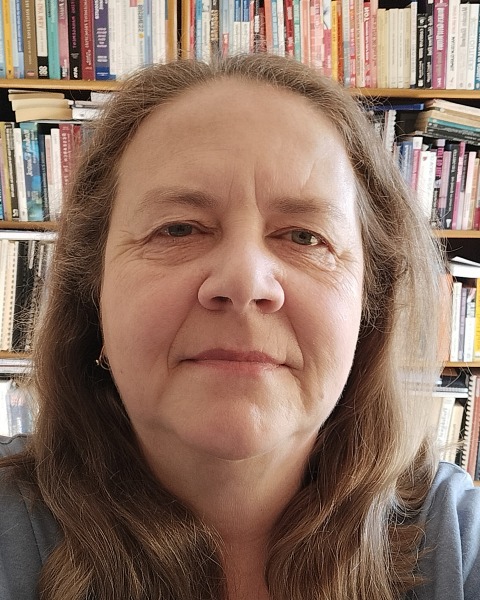Qualitative Methods
Creativity for evaluation: enhancing listening to visual stories
-

Madri Jansen van Rensburg, PhD Consulting Psychology (she/her/hers)
Owner
Resilience Analysis Consulting
Johannesburg, Gauteng, South Africa -

Madri Jansen van Rensburg, PhD Consulting Psychology (she/her/hers)
Owner
Resilience Analysis Consulting
Johannesburg, Gauteng, South Africa
PD Workshop Presenter(s)
Presenter(s)
Location: Room 309/310
Abstract Information: Narrative approaches in evaluation often focus on collecting data and ensuring the participation of less assertive groups. However, stories allow deeper communication and can activate community action and transformation. Visual narratives are even more effective as it transcends language and cultural barriers. However, visuals are usually restricted to aid data collection or enhance the dissemination of evaluation results. Evaluators seldom feel confident using visual methods more widely. Questions about validity, reliability, credibility, and trustworthiness are often raised, and the seeming lack of rigor further restricts evaluators’ confidence. Creativity is essential in all aspects of the evaluation process. Evaluators need to design studies relevant to the context that will allow sharing of the unique stories of the people, communities, and projects. Methodologies to capture data and facilitate engagements must be innovative and tailor-made for the audience and stakeholder groups. Creativity is not an innate ability but a skill that develops through practice. This work session will focus on creative, reflective practice. It will stimulate evaluators to recognize, develop, and elicit stories by enhancing their visual creativity. Thinking more creatively will improve evaluation functions from design, data collection, analysis, and disseminating results by moving outside the known and comfortable spaces. It ultimately has a personal benefit in that creativity enhances reflective practice. All evaluators and commissioners, from emerging evaluators to experienced and master levels, will benefit. The experiential format will include pen and pencil exercises equally useful for experienced artists and those who have yet to try any art exercise. Activities will consist of visual note-taking, using shapes to develop evaluation aids, and using different prompts. It will develop personal skills and the ability to elicit creativity from evaluantees. The participants will further co-create an understanding of the benefits and application of visual elements in evaluations. Daily creative prompts will be shared for a month after the conference via social media. The in-person and continued interaction aims to motivate and create a habit of creative practice. Various examples of visual evaluation methods will be shared. These will include evaluations in the global South, especially Africa, illustrating the importance and use in multi-cultural and resource-limited settings. Most importantly, this session will be fun and will illustrate the creative power of every evaluator. No artistic talent or experience is required. The objectives include illustrating the importance of creative thinking; modeling creative practice through sharing examples; enabling participants to overcome self-critique; and equipping participants with essential skills to start their creative practice. At the end of this work session, participants can identify their creative strengths, continue the creative practice, and apply creative thinking and actions in evaluation work. Key themes will include participation, storytelling, the importance of visual stories; examples of creativity throughout the evaluation cycle; creating images from basic shapes; creative practice including visual cues, notetaking, and doodling.
Relevance Statement: Stories aim to break through inactivity and fear of people to motivate them to deal creatively with challenges (Ganz, 2009). There are stories about self, us, and now. This work session will first use the story of self, the creative evaluator, and illustrate the use and importance of including visual and creative thinking in the evaluation cycle. More importantly, the work session will actively engage the participants in creating their own stories through creative methods. During the session and the social media interaction after the conference, the presenter will facilitate opportunities for the participants to continue a habit of creative thinking. Development work has shifted from focusing on equality of opportunities to agency (Boyte, 2008). This shifts the role of the evaluator to create an enabling environment where the studies are done “with” and not “for” or “on” people (Reason & Bradbury, 2008). Storytelling and specifically visual stories help create this environment. The work session aims to develop the creative thinking of evaluators beyond using visual aids for data collection and infographics for improved dissemination of results. It will demonstrate how people can be creative and think more creatively in their evaluation functions. Visual research methods are established practice (Leavy, 2017). Visual and creative thinking and practice are receiving more attention and attracting evaluators globally (Searle, 2013). However, many evaluators do not believe they have the artistic abilities to be creative. The session will illustrate that all evaluators must be creative thinkers moving them from problem-solving to innovation. This will influence their evaluation practice and ensure that evaluantees can express themselves and be heard. Visual methods, therefore, realize equity. The presenter’s experience in Africa and the global South working in resource-limited and multi-cultural settings allows sharing of real-world examples. This presentation will be fun and practical. All evaluators need to be innovative, and using creative elements and activities can enhance their work by developing new methods and adjusting tools to be contextually relevant. It will improve data depth, width, and interpretation and therefore assist in transforming the evaluation systems. References Boyte, H.C. (2008). Against the Current: Developing the Civic Agency of Students, Change. The Magazine of Higher Learning 40(3):8-15. Ganz, M. (2009). Why Stories Matter: The Art and Craft of Social Change. Sojourners Magazine 38(3):16. Leavy, P. (2017). Introduction to Arts‐Based Research: Handbook of Arts-Based Research. New York:Guilford Press. Reason, P., & Bradbury, H. (2008). Action Research. Participatory Inquiry and Practice. London: Sage. Searle, M. (2013) Understanding the Potential for Arts-Informed Inquiry in Program Evaluation. DPhil dissertation submitted to the Faculty of Education, Queen’s University Kingston, Ontario, Canada.
